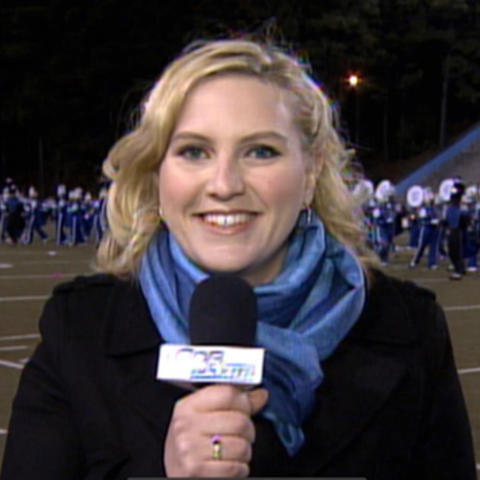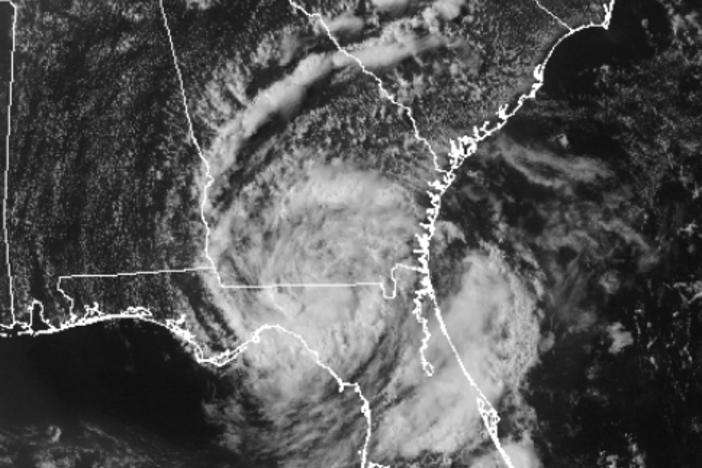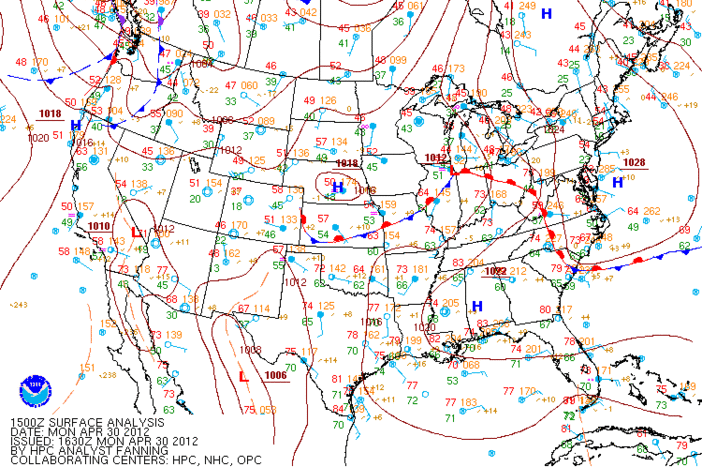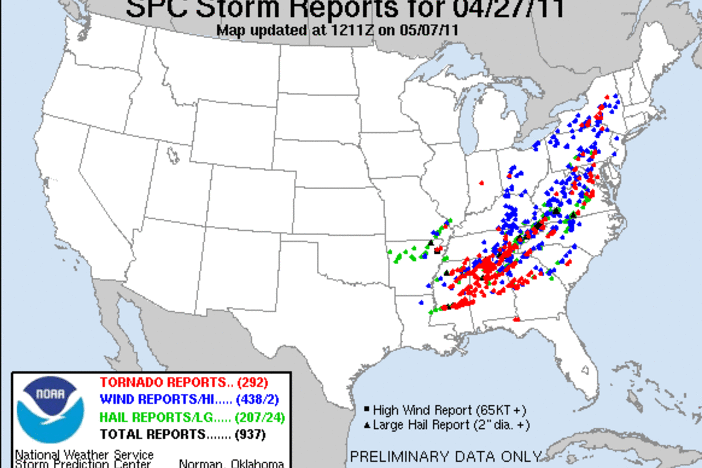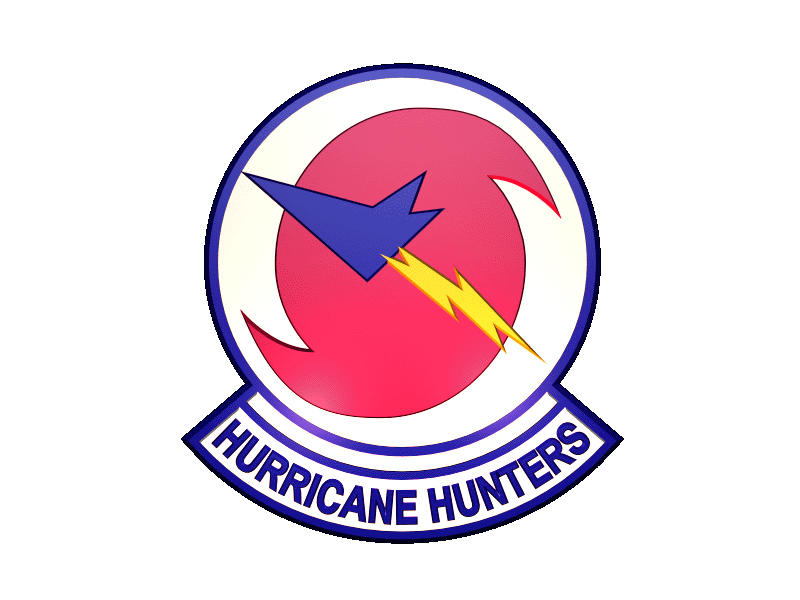
Section Branding
Header Content
Tour Through The Hurricane Hunters’ Airplane
Primary Content

Recently, the 53rd Weather Reconnaissance Squadron of the US Air Force paid us a visit by flying their WC-130J into Falcon Field Airport, which is located in Peachtree City, Georgia. More commonly known as the “Hurricane Hunters,” this brave crew actually flies into hurricanes and tropical storms in order to monitor their intensity and development. The Hurricane Hunters are based at Keesler Air Force Base in Biloxi, Mississippi, and they collaborate with the National Hurricane Center in Miami, Florida, during each mission.
On this particular afternoon, the tour of the Hurricane Hunters’ airplane began in the rear cargo area. In this area, the crew stores various items ranging from computer systems used for mid-flight weather monitoring, to basic (and not so basic) travel supplies, such as food, microwaves, toilet paper, medical supplies, and supplemental oxygen masks. The walls of the plane are lined with red cargo nets, and within the nets are harnesses that the Hurricane Hunters use to strap in for take off and landing.
Walking towards the front of the plane, two weather officers were stationed parallel to each other, with electronic consoles facing each of them. A chute jutted out of the belly of the plane behind one of the officers. The weather officer operating the chute was Master Sergeant Amy Lee, who serves as the Loadmaster/Dropsonde Operator during the Hurricane Hunters’ missions.
As the Loadmaster, Sergeant Lee is responsible for making sure all cargo is tied down and properly stored before, and during, the flight. She is also required to double check the plane’s exterior while the engines are warming up, and she monitors the plane during the flight in order to ensure that the plane is operating safely and smoothly.
As the Dropsonde Operator, Master Sergeant Lee is in charge of dropping a special weather device, called a dropsonde, into the tropical storm or hurricane. Master Sergeant Lee dispatches the dropsondes by using the dropsonde chute, which expels the weather instrument out of the airplane and into the storm.
While the dropsonde is falling towards the ground, it is collecting important weather data, such as temperature, humidity, pressure, wind speed, and wind direction. The Hurricane Hunters release several dropsondes, particularly within the storm’s eye and eyewalls. The data from the dropsondes let the Hurricane Hunters in the airplane, and the weather forecasters on land, know if the tropical system is increasing or decreasing in strength.
During missions, the Master Sergeant Amy Lee works closely with Captain Tina Smith, who serves as the Aerial Reconnaissance Weather Officer. Captain Smith is in charge of monitoring the data from the dropsondes and other weather equipment mounted on the airplane. She also maintains communication with the National Hurricane Center through an electronic “chat” link on her weather monitors.
A small doorway connects the belly of the plane with the cockpit, where the navigator, pilot, and co-pilot sit. The navigator determines the mission’s flight details, including the route, headings, altitudes, and checkpoints. During the flight, the navigator monitors the GPS and other flight controls to determine the plane’s position in the air and to monitor the flight’s progress.
The navigator works closely with the pilots, who are in charge of flying the airplane. One pilot is designated the Aircraft Commander, who oversees all of the other crewmembers in addition to the overall progress of the mission. The other pilot is designated as the Co-Pilot, who assists the Aircraft Commander with flying the airplane through the tropical cyclones.
The Hurricane Hunters’ mission can last up to 12 hours, depending on the size of the storm, its distance from land, and how much data is necessary to collect from it. The crew flies in an “alpha pattern,” which consists of flying into the storm for 105 nautical miles in each cardinal direction. The “alpha pattern” allows the crew to repeatedly fly through and deploy several dropsondes into the storm’s eye and eye wall structures. Once the crew has collected enough data (or has reached their safest “low fuel” threshold), they return home to Keesler Air Force Base.
Many tools are used to forecast hurricanes’ intensity and landfalls, including satellite, radar, and hurricane forecast models. Forecast models are useful in giving meteorologists an idea as to how a storm will behave, however a model’s forecast is only as good as the initial information plugged into it – meteorologists call this information the “initial conditions.” By dropping weather instruments directly into tropical cyclones, the Hurricane Hunters are able to determine the most accurate initial conditions within the storm. In turn, their mission helps to improve the National Hurricane Center’s forecasts by as much as 30%, allowing for greater lead time in evacuations and emergency preparations.
For more information about the Hurricane Hunters, be sure to visit the Hurricane Hunters Association’s website at http://www.hurricanehunters.com. You can also obtain up-to-date tropical weather information at the National Hurricane Center’s website, http://www.nhc.noaa.gov. Be sure to check the National Weather Service’s website for any hazardous weather watches and warnings in your area at http://www.weather.gov.
I hope you enjoyed the tour of the Hurricane Hunters’ airplane! I’d love to hear from you: what was your favorite part of the plane? Would you want to become a hurricane hunter? Do you think you could handle flying into a tropical storm or hurricane? Personally, I would love to fly a mission with the Hurricane Hunters, but I can barely handle a mild case of airplane turbulence over the continental United States!
Related Posts You May Like
First Tropical Storm of the 2011 Season: Arlene
If A Storm Forms In The Tropics, Is It A Tropical Storm?
A Hurricane By Any Other Name Would Still Be As Stormy


